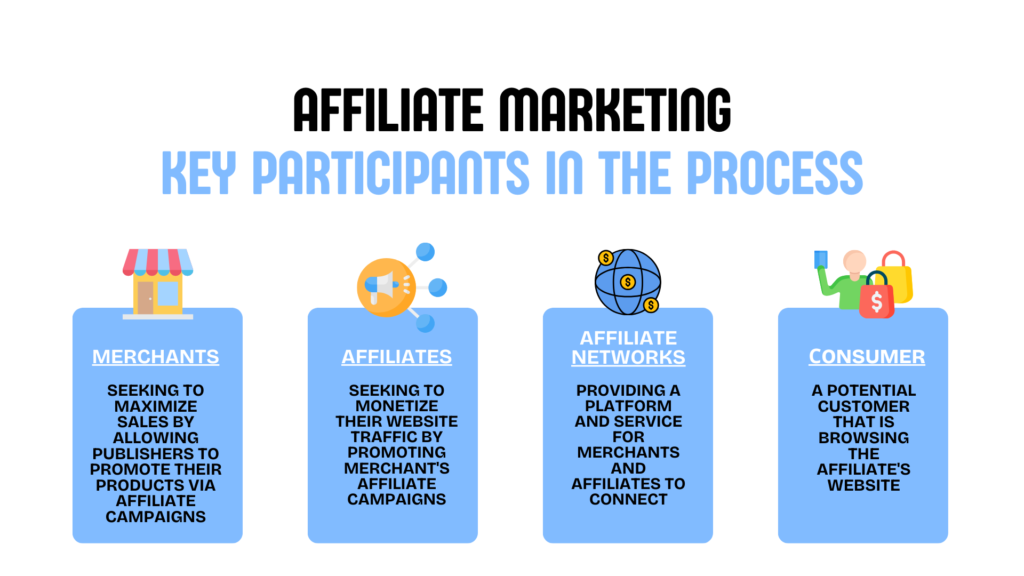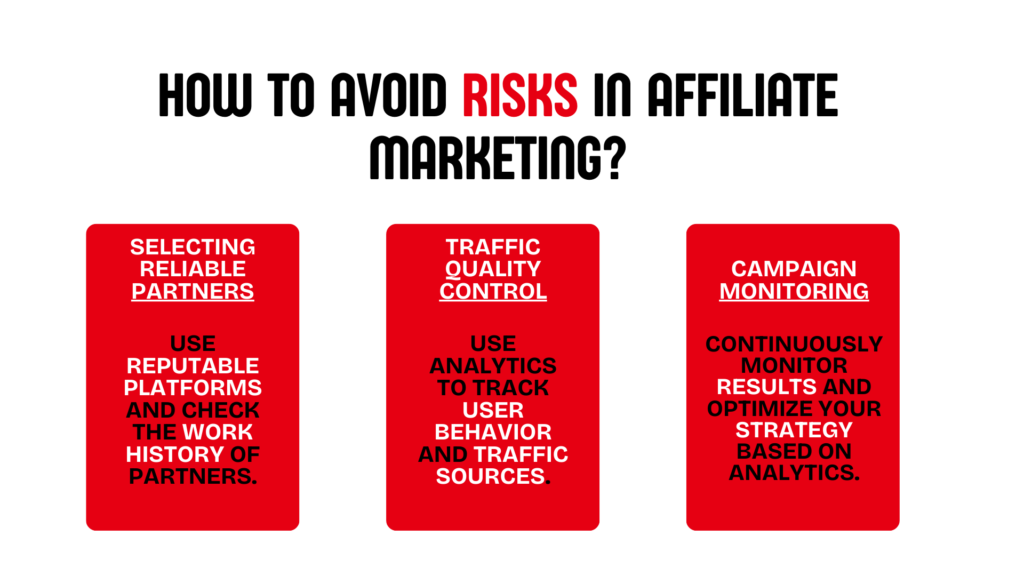Affiliate marketing is an effective promotion model in which advertisers and affiliates collaborate to achieve mutual benefit. However, to be successful, it is important to understand how this system works and consider key aspects.
What is affiliate marketing?
Affiliate marketing is a system where partners promote an advertiser’s product or service, receiving a reward for the result (for example, for clicks, leads or sales)

Example: A blog owner places a link to an online store on his site. For each purchase made through this link, the blogger receives a percentage of the order amount.
What payment models are available within affiliate programs?
Different advertisers use different payment models to distribute their budgets as efficiently as possible.
- CPA (Cost Per Action)
Payment for a specific action, such as registration, purchase or form filling. This is the most popular model, as the advertiser pays only for the achieved result.
- CPC (Cost Per Click)
Payments are accrued for each click on the advertising link. This model is ideal for attracting large volumes of traffic, but requires control over its quality.
- CPL (Cost Per Lead)
The advertiser pays for each potential client who left their contact information. The model is especially useful for niches with a long transaction cycle.
- CPM (Cost Per Mille)
Payment for 1000 ad impressions. Used to increase reach and brand awareness.
- Revenue Share
The affiliate receives a percentage of the income of attracted clients. This is a long-term strategy that is often used in subscription services or online platforms.
What are the pros and cons of affiliate marketing?
| BENEFITS | DISADVANTAGES |
| Pays for results. This is the main difference between affiliate marketing and other types of promotion and, perhaps, its main advantage. | Fraud traffic. One of the main problems in affiliate marketing is fraud, that is, fraudulent traffic. Unscrupulous partners can inflate clicks, leads, or even purchases using bots, click farms, and other gray methods. As a result, the advertiser pays for useless actions that do not bring real customers and profits. |
| Gets a wide reach. Through promotion with the help of partners, more people learn about the business, and loyalty to its products grows. | Reputational risks. The advertiser’s reputation may suffer due to incorrect actions of partners. Let’s say the seller provides educational services for children, and the partner places its ad on a gambling site or uses too aggressive promotion methods, bordering on spam. This negatively affects the brand image. |
| Receives targeted traffic. Partners advertise the product on thematic platforms or recommend it to their subscribers who trust them. Therefore, the conversion of such traffic into purchases is usually higher than, for example, when using targeted or contextual advertising. | The need for control. The advertiser needs to constantly monitor the work of the affiliate program: analyze statistics, track traffic sources, promptly identify and resolve problems. |
| Spends less on its advertising. Thanks to the fact that partners increase brand awareness, advertising launched by the brand itself costs it less and brings good results. |
Affiliate marketing is a powerful tool that can bring significant profits if done correctly. Understanding the payment models and how to minimize risks is the key to success in this field.

Start with simple campaigns, then scale successful strategies to increase profits.
Leave a Reply